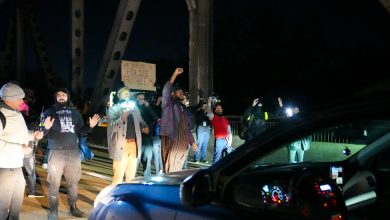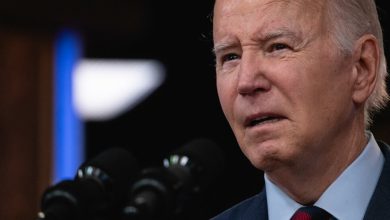Albert Okura, ‘Chicken Man’ Who Saved a Ghost Town, Dies at 71

Albert Okura, a third-generation Japanese American, was a college dropout whose dream was to become the world’s biggest fast-food chicken salesman. He became a successful chicken restaurateur, if not the biggest, and later turned to historic preservation — and, as the song says, got his kicks on Route 66.
His first foray into the highway’s colorful history was his purchase of the site of the nation’s first McDonald’s restaurant, on Route 66 in San Bernardino, Calif., in 1998.
The original restaurant — the octagonal shack that Richard and Maurice McDonald opened in 1948 and sold to Ray Kroc in 1961 — was long gone. But Mr. Okura, who credited the hamburger chain with his preoccupation with fast food, opened an unofficial McDonald’s museum there, as well as the corporate headquarters of his rotisserie chicken chain, Juan Pollo.
Some 140 miles to the northeast on Route 66, he bought an entire ghost town for $425,000 in 2005 and promised to restore it.
The unincorporated town, Amboy, Calif., consisted of a shuttered motel, a post office, an abandoned church, two dirt air strips and a gas station with a distinctive, if non-working, 50-foot-high space-age-style neon sign that had been a beacon for motorists on Route 66 for decades.
Mr. Okura attributed his purchase to “destiny” — the same explanation he gave for his success as “the Chicken Man,” as he called himself. But he acknowledged that buying Amboy — after two investors who had rented it out for movie locations favored by psychopathic killers (“The Hitcher” in 1986 and “Kalifornia” in 1993) defaulted on their purchase — was kind of quixotic.
“It’s hard to explain,” he told The Los Angeles Times. “How many people can say they own a whole town?”
Mr. Okura died on Jan. 27 in Ontario, Calif. He was 71.
His death was announced by his company. His son Kyle said that he had a number of health problems, but that the immediate cause was sepsis.
Mr. Okura’s passion for preservation was coupled with a penchant for philanthropy and a flair for publicity.
In addition to the McDonald’s museum, which is packed with memorabilia, he founded and supported a veterans museum near his corporate headquarters; distributed chicken dinners free to social gatherings and civic groups; and subsidized local Veterans Day parades and Christmas toy drives.
But he harbored a special interest in Route 66 — the fabled highway that carried tourists to the Southwest, soldiers to the West Coast and refugees from the Dust Bowl, and that was immortalized in a song written by Bobby Troup and memorably recorded by Nat King Cole in 1946:
If you ever plan to motor west
Travel my way,
Take the highway that’s the best.
Get your kicks
On Route 66.
But the highway, which will celebrate its 100th anniversary in 2026, was placed on the World Monuments Fund list of endangered cultural and architectural sites after Amboy and other historic hamlets were forsaken in the early 1970s when they were bypassed by a new highway, Interstate 40.
The Roy of Amboy’s famous Googie-style “Roy’s” gas station sign, erected in 1959, was Roy Crowl, who opened the service station in 1938 and with his first wife, Velma, owned the town. It was home to about 200 people in the 1940s when Mr. Crowl teamed up with Herman Burris, known as Buster, who married Roy’s daughter Betty. Together they added a motel and cafe.
Mr. Burris sold the town in 1998. The two investors who had previously arranged to rent it out for photo shoots and movie locations bought it outright, but lost it in a foreclosure by Mr. Burris’s widow. She sold it and several hundred acres of adjacent desert to Mr. Okura, who promised to reopen Roy’s and restore the town.
“The more I looked into Amboy, the more I realized there’s no other place like this,” Mr. Okura told The New York Times in 2007.
The gas station reopened in 2008, and its balky sign was lit again in 2019.
Mr. Okura “did more for California’s Route 66 than any other person in preservation,” Beth Murray, a photographer, wrote on Facebook. “We have lost someone who saw a goal and made it happen, saw a town and made it prosper, saw a dream and made it come true.”
Albert Okura was born on Dec. 3, 1951, in Wilmington, Calif., to Tsuyoshi and Chiyoko Okura. His father was a semiprofessional baseball player. His grandparents were farmers who had immigrated from Japan in the 1910s.
As Japanese Americans, his parents had been held in detention camps during World War II. His father was serving in the U.S. Army when he was rounded up.
“I wasn’t smart enough to be a lawyer or scientist, much less a doctor or dentist (my mother’s personal favorite),” Mr. Okura recalled in a memoir, “Albert Okura: The Chicken Man With a 50 Year Plan,” which he published himself in 2014.
By 1970, he was flipping burgers for minimum wage at Burger King. He quit Los Angeles Junior College the next year, worked his way up to manage other fast food outlets. In 1984, when he was 32, he opened a rotisserie chicken restaurant in Ontario, east of Los Angeles, with the help of his uncle and brother-in-law and a recipe created by Armando Parra, a friend who had been raised in Chihuahua, Mexico.
A five-star review of his second outlet in The San Bernardino Sun kick-started the Juan Pollo chain.
“I had a very big interest in McDonald’s growing up in L.A,” Mr. Okura said in 2014. “It was my inspiration to go into fast food. I had no idea McDonald’s even started in San Bernardino until I moved out here. And when the property came up for sale in 1998, I felt like it was my destiny to buy it.”
His museum is not authorized by the McDonald’s Corporation, which has its own museum in Des Plaines, Ill., the site of the first McDonald’s opened by Ray Kroc, in 1955.
In addition to his son Kyle, the director of marketing at Juan Pollo, Mr. Okura is survived by his wife, Sella (Oei) Okura; another son, Aaron, who directs operations at the company; and a daughter, Chloe.
Kyle Okura said he had no way of knowing whether his father had fulfilled his dream of becoming the biggest chicken purveyor in the world. There is no entry for that category in the Guinness record book.
But he estimated that the company rotisseries 100 tons of poultry a week at its 25 locations in Southern California. And Albert Okura claimed a personal best that was pretty impressive, too. His father, Kyle said, estimated that he had cooked two million chickens himself.





